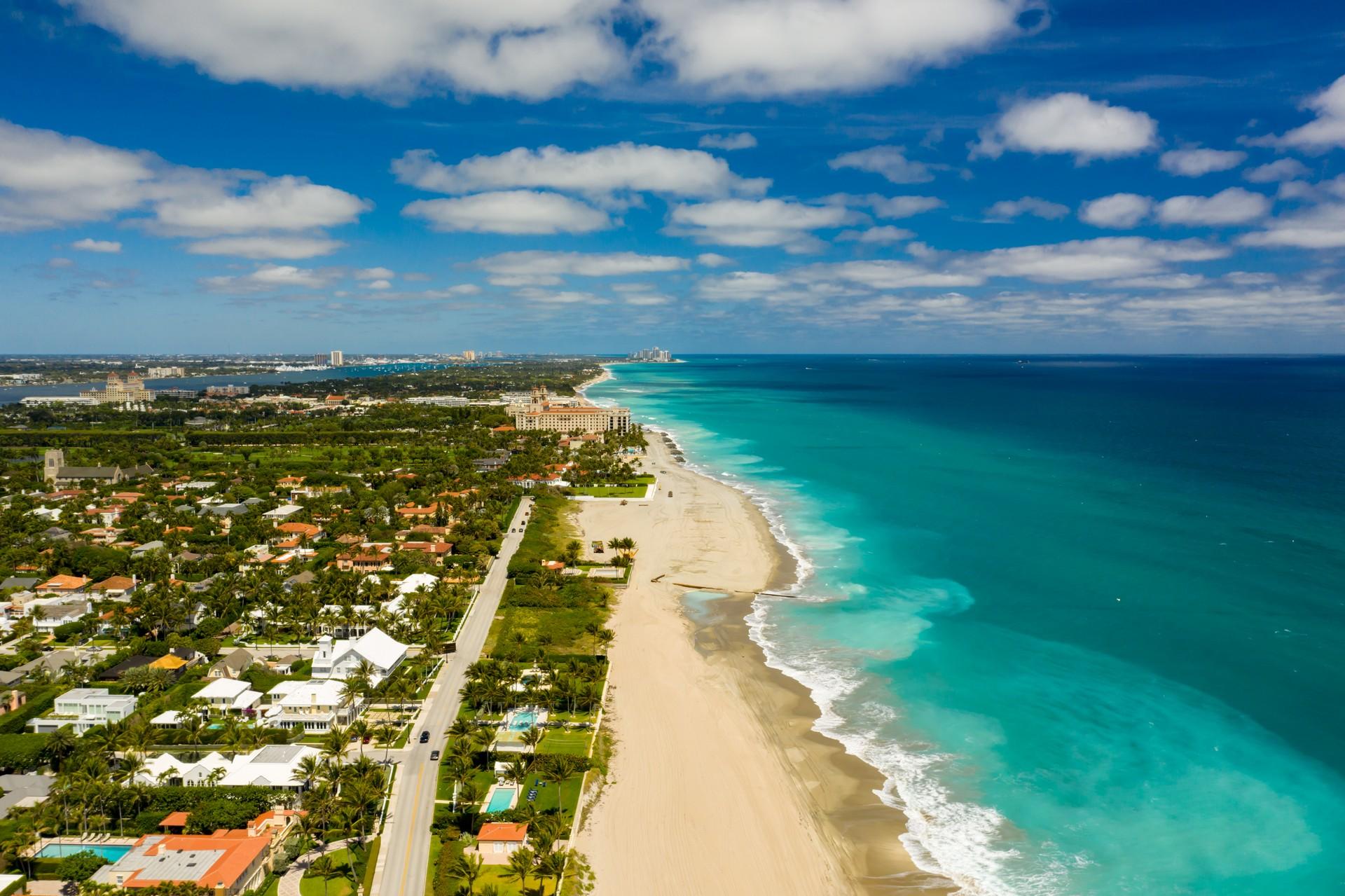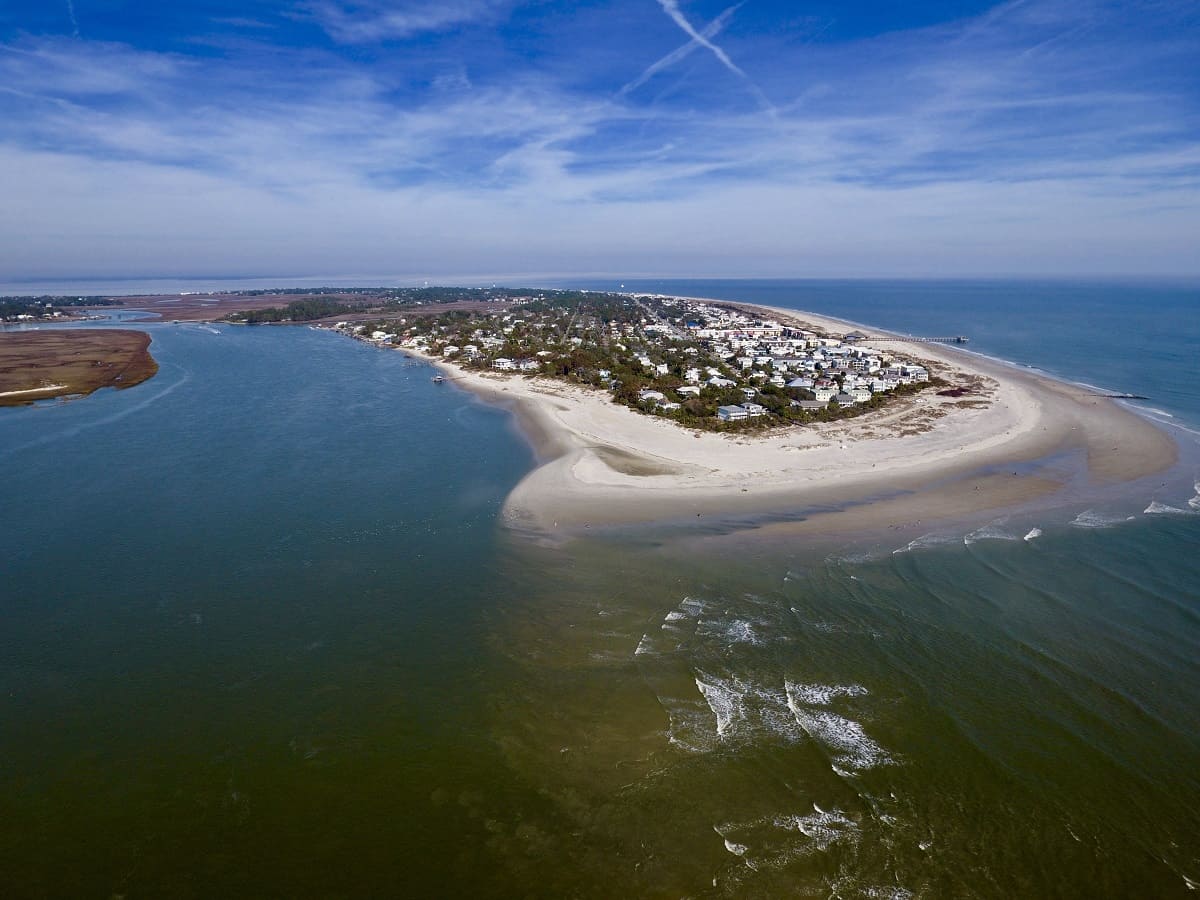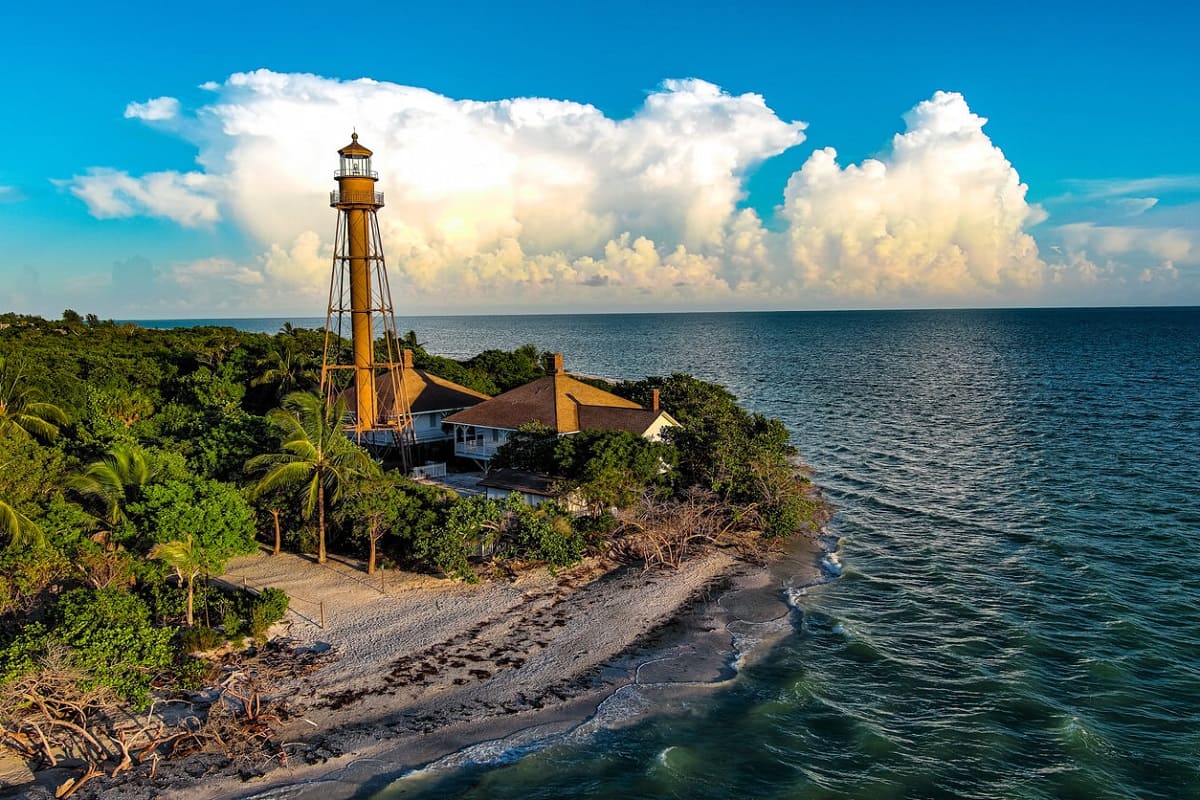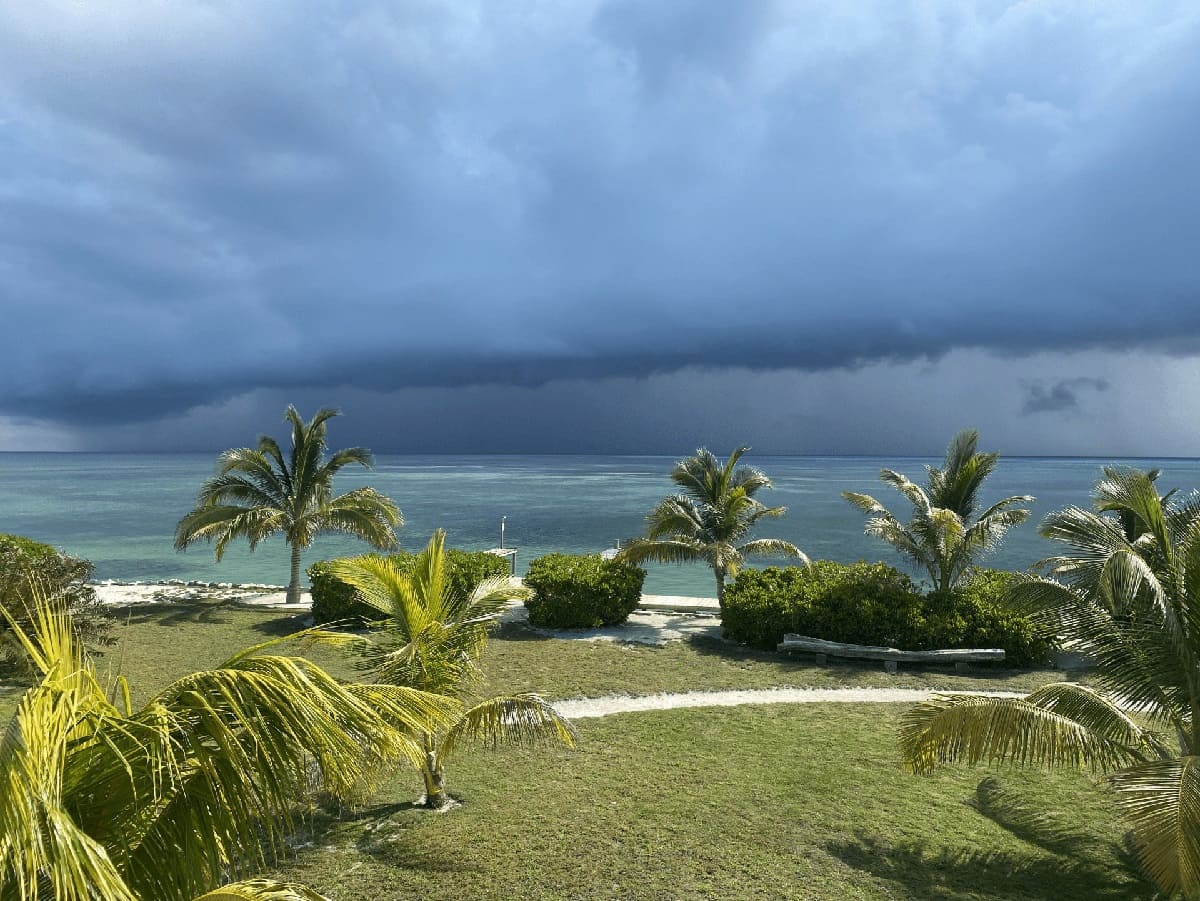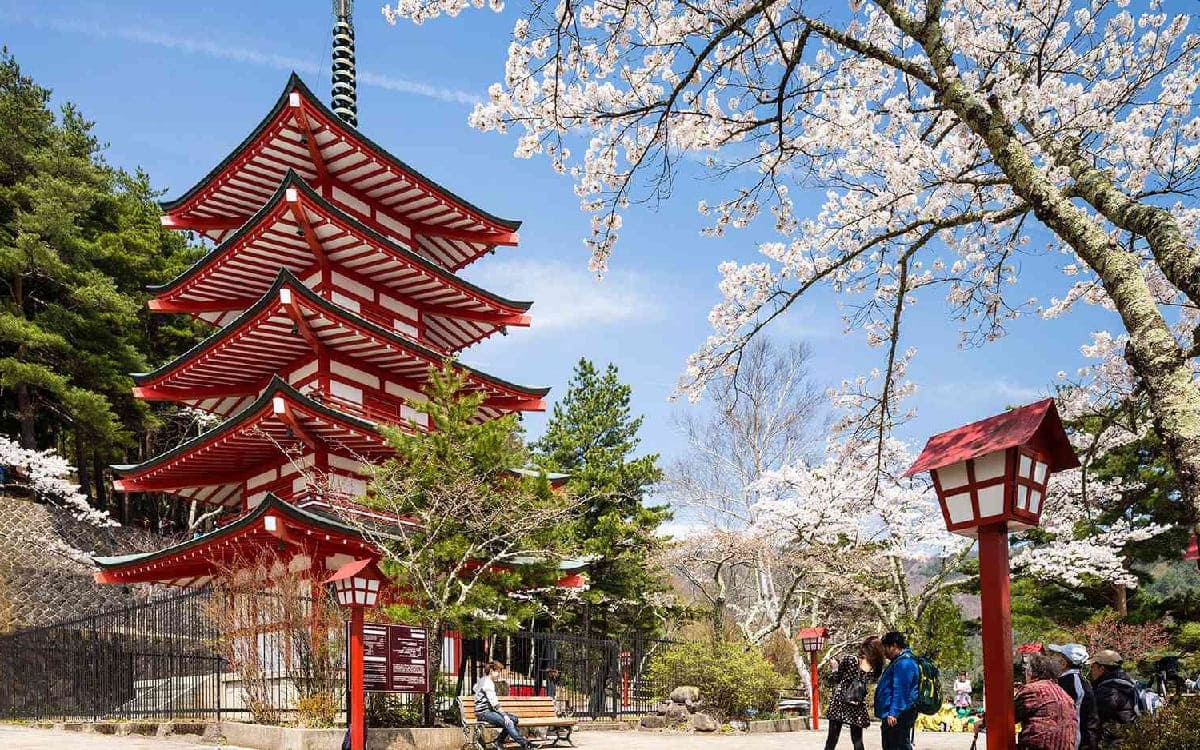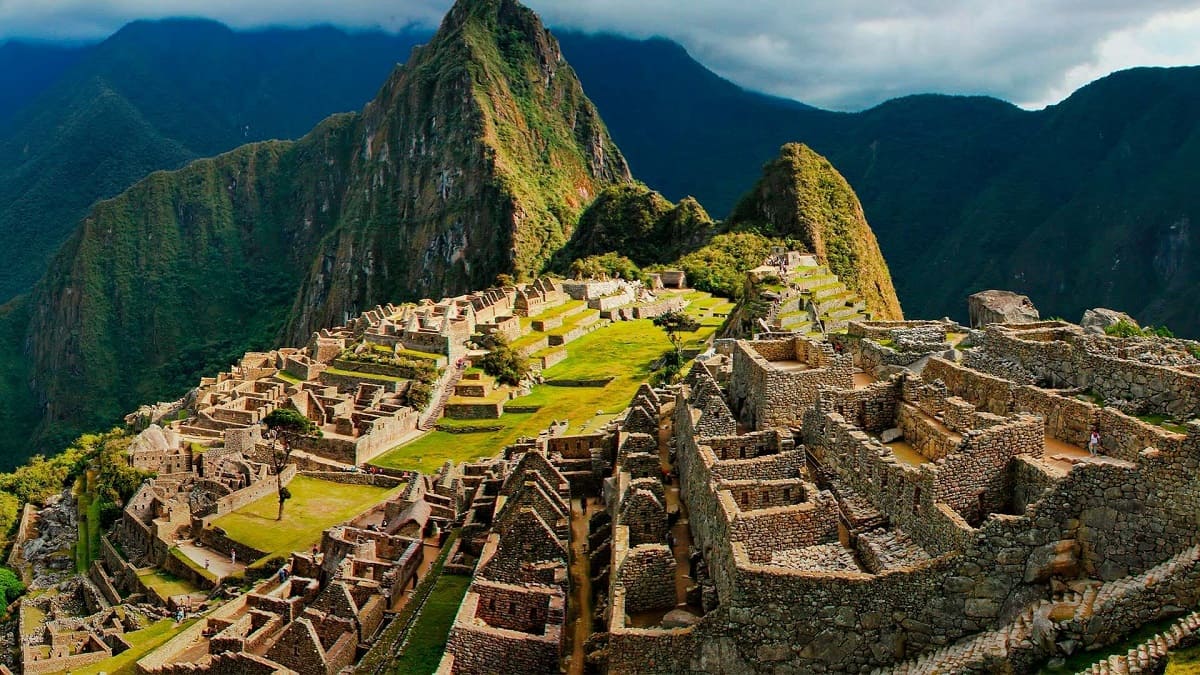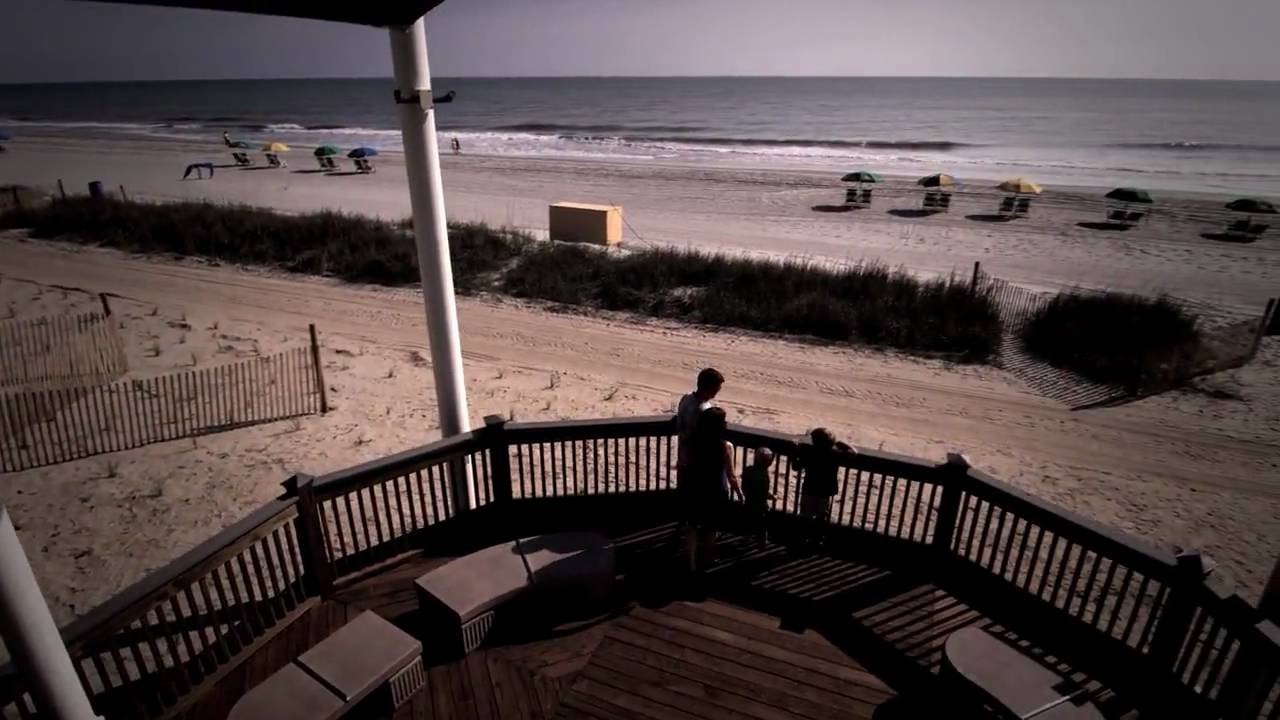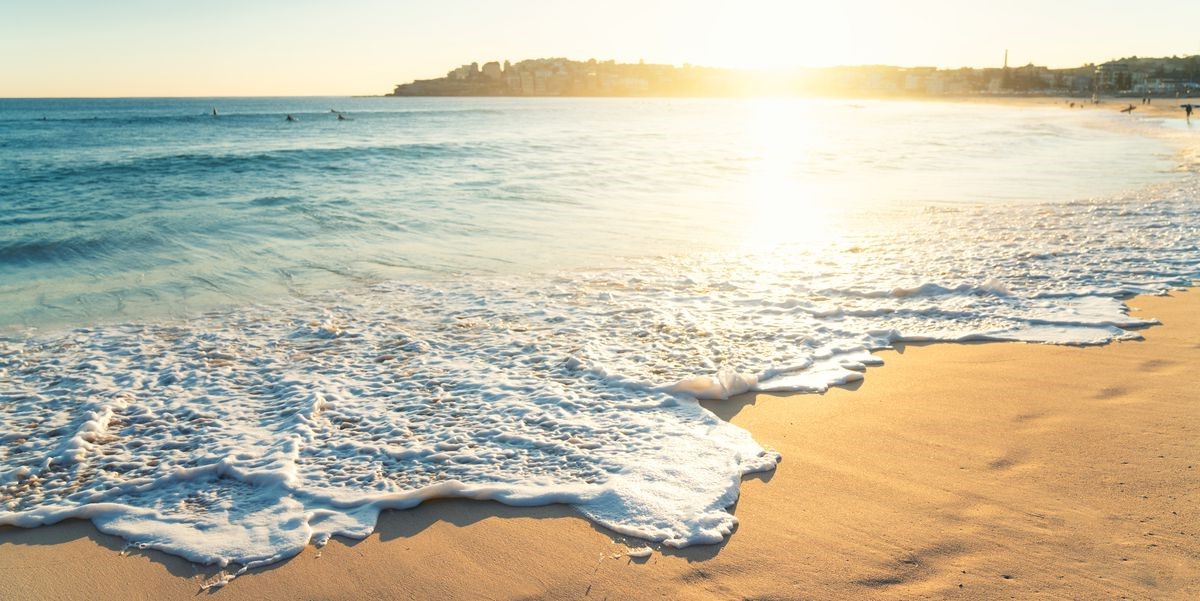Home>Outdoor & Recreation>Myrtle Beach Water Temperature: Everything You Need To Know
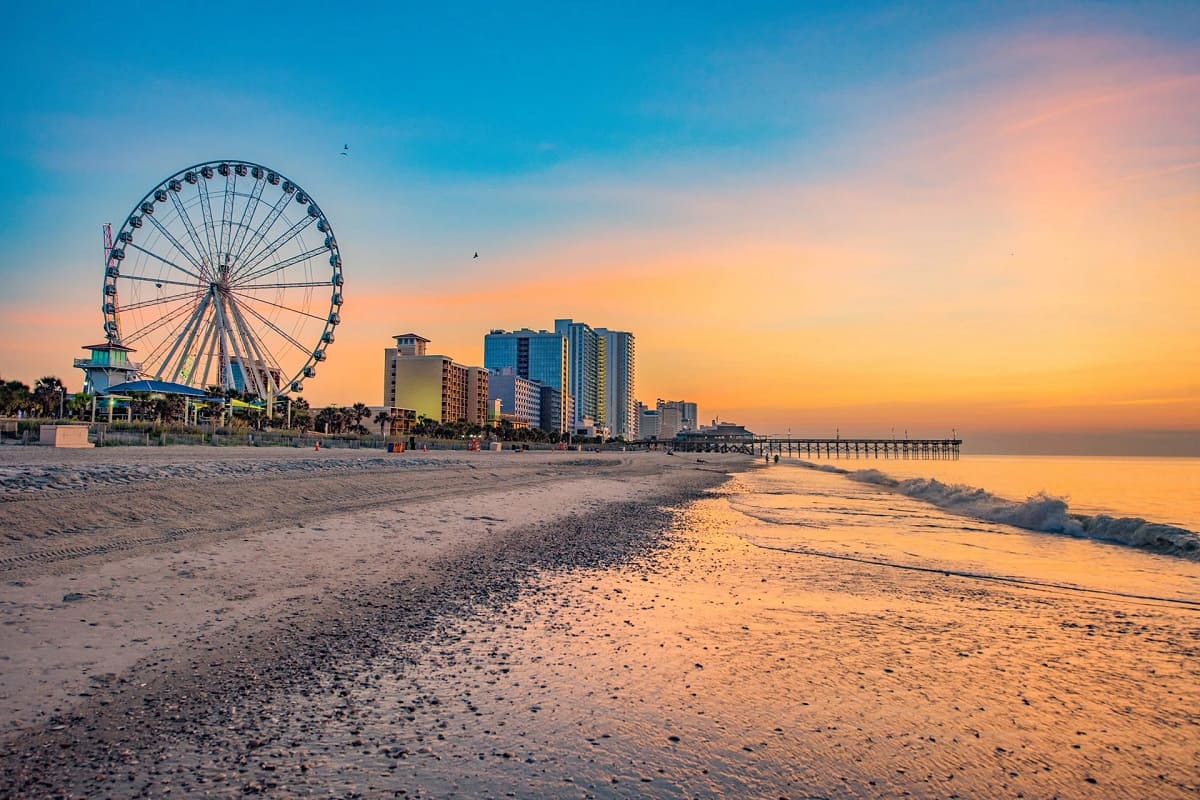

Outdoor & Recreation
Myrtle Beach Water Temperature: Everything You Need To Know
Published: February 19, 2024
Discover the ideal water temperatures for outdoor & recreation activities in Myrtle Beach. Get all the essential information you need to plan your perfect beach day!
(Many of the links in this article redirect to a specific reviewed product. Your purchase of these products through affiliate links helps to generate commission for Temperatures.com, at no extra cost. Learn more)
Table of Contents
Understanding Water Temperature
Water temperature plays a crucial role in shaping the overall experience of any aquatic activity. In the context of Myrtle Beach, understanding the water temperature is essential for visitors and locals alike. The temperature of the water at Myrtle Beach fluctuates throughout the year, impacting various recreational and leisure activities. Whether you are planning a beach vacation, water sports, or simply a relaxing day by the shore, comprehending the nuances of water temperature can significantly enhance your experience.
The water temperature at Myrtle Beach is influenced by several factors, including seasonal changes, weather patterns, and ocean currents. During the summer months, typically from June to August, the water temperature at Myrtle Beach tends to be at its warmest, making it ideal for swimming, surfing, and other water-based activities. The average water temperature during this period ranges from a comfortable 78°F to 86°F, providing a refreshing escape from the heat and humidity of the coastal climate.
As the fall season sets in, the water temperature gradually begins to decrease. From September to November, the ocean at Myrtle Beach experiences a moderate decline in temperature, signaling the transition from summer to autumn. During this time, the water temperature hovers around 70°F to 78°F, offering a slightly cooler yet still enjoyable environment for swimming and water sports enthusiasts.
Winter brings a more significant drop in water temperature, with the ocean at Myrtle Beach reaching its coolest point. From December to February, the water temperature ranges from 52°F to 60°F, creating a chilly yet serene atmosphere along the coastline. While swimming may be less common during this time, the beach remains a picturesque setting for leisurely walks, shell collecting, and contemplative moments by the water's edge.
With the arrival of spring, the water temperature gradually begins to rise again, marking the onset of a new beach season. From March to May, the ocean at Myrtle Beach experiences a gradual warming trend, with water temperatures ranging from 64°F to 72°F. This transition period sets the stage for a rejuvenating experience, as visitors can once again embrace water-based activities as the temperature becomes increasingly inviting.
Understanding the fluctuations in water temperature at Myrtle Beach is essential for planning and enjoying a wide range of activities. Whether it's basking in the warmth of summer, savoring the tranquility of winter, or embracing the revitalization of spring, the water temperature serves as a guiding factor for creating memorable experiences along the captivating shores of Myrtle Beach.
Factors Affecting Myrtle Beach Water Temperature
The water temperature at Myrtle Beach is influenced by a myriad of factors that collectively shape the aquatic environment throughout the year. Understanding these factors is crucial for gaining insight into the dynamic nature of the ocean's temperature and its impact on recreational activities and coastal experiences.
1. Seasonal Variations
The seasonal changes play a pivotal role in determining the water temperature at Myrtle Beach. During the summer months, the ocean experiences warmer temperatures, creating an inviting environment for swimming, surfing, and other water-based activities. In contrast, the winter season brings a significant drop in water temperature, leading to a cooler and more tranquil coastal setting.
2. Weather Patterns
The weather exerts a direct influence on the water temperature at Myrtle Beach. Prolonged periods of sunshine and high temperatures contribute to the warming of the ocean waters, while overcast or cooler weather can lead to a decrease in water temperature. Additionally, tropical storms and hurricanes can impact the water temperature, causing fluctuations and altering the overall aquatic conditions.
3. Ocean Currents
The presence of ocean currents significantly affects the water temperature at Myrtle Beach. Warm ocean currents can elevate the water temperature, creating favorable conditions for swimming and water sports. Conversely, cooler currents can lead to a decrease in water temperature, influencing the overall comfort and suitability of aquatic activities.
4. Geographic Location
Myrtle Beach's geographic location along the South Carolina coastline also plays a role in shaping its water temperature. The proximity to the Gulf Stream, a warm and swift Atlantic Ocean current, contributes to the relatively warmer water temperatures experienced during the summer months. Conversely, the absence of such influences during the winter months contributes to the cooler ocean temperatures.
5. Human Activity
Human activity, such as coastal development and urbanization, can indirectly impact the water temperature at Myrtle Beach. Urban areas and infrastructure can lead to heat retention, affecting the surrounding water temperature. Additionally, factors such as pollution and runoff can influence the overall ecological balance, potentially impacting the ocean's temperature and quality.
6. Climate Change
The broader impact of climate change also has implications for the water temperature at Myrtle Beach. Long-term shifts in global climate patterns can lead to alterations in ocean temperatures, affecting the local aquatic environment. Understanding these broader environmental dynamics is essential for comprehending the evolving nature of water temperature at Myrtle Beach.
By considering these multifaceted factors, it becomes evident that the water temperature at Myrtle Beach is subject to a complex interplay of natural, environmental, and climatic influences. This dynamic interaction shapes the seasonal variations and overall aquatic conditions, ultimately defining the diverse range of experiences that the coastal destination offers throughout the year.
Best Times to Enjoy the Water
The best times to relish the water at Myrtle Beach coincide with the warmer months, particularly from June to August. During this period, the water temperature reaches its peak, ranging from a comfortable 78°F to 86°F. These balmy temperatures create an inviting aquatic environment, perfect for swimming, surfing, and indulging in various water sports. The warm embrace of the ocean provides an ideal escape from the scorching summer heat, offering a refreshing and rejuvenating experience for beach enthusiasts.
As the summer season unfolds, the inviting water temperatures at Myrtle Beach set the stage for a myriad of aquatic adventures. Whether it's plunging into the waves for a leisurely swim, testing surfing skills against the ocean's swells, or engaging in exhilarating water sports, the warm waters cater to a diverse range of aquatic pursuits. Families, friends, and solo travelers alike can revel in the joy of frolicking in the ocean, building sandcastles along the shore, or simply basking in the sun-kissed ambiance while the gentle waves lap at the coastline.
Moreover, the warm water temperatures during the summer months create an idyllic setting for beach picnics, seaside strolls, and romantic sunset gatherings. The inviting nature of the ocean beckons visitors to immerse themselves in the coastal charm, fostering unforgettable moments and cherished memories amidst the picturesque backdrop of Myrtle Beach.
While the summer months stand out as the prime time for water-based enjoyment, the transition periods of spring and early fall also offer favorable conditions for embracing the ocean's allure. From March to May, and again from September to November, the water temperature at Myrtle Beach remains conducive to various aquatic activities. During these shoulder seasons, visitors can savor the tranquility of the beach, engage in leisurely swims, and partake in water-based recreation as the ocean temperature gradually transitions between the warm embrace of summer and the cooler ambiance of fall.
In essence, the best times to enjoy the water at Myrtle Beach align with the warmer months, particularly from June to August, when the ocean's temperature reaches its peak, creating an inviting and vibrant aquatic playground. However, the transitional periods of spring and early fall also present opportune moments to revel in the coastal charm and partake in a diverse array of water-centric experiences. Whether it's the height of summer or the gentle embrace of the shoulder seasons, Myrtle Beach offers a captivating aquatic tapestry that beckons visitors to immerse themselves in its coastal allure.
Safety Tips for Swimming in Myrtle Beach
Swimming in the pristine waters of Myrtle Beach can be a delightful and invigorating experience, but it's essential to prioritize safety to ensure a memorable and secure aquatic adventure. Whether you're a seasoned swimmer or a novice enthusiast, adhering to safety guidelines is paramount for enjoying the ocean responsibly. Here are crucial safety tips to consider before taking the plunge into the azure expanse of Myrtle Beach's coastal waters:
-
Respect the Flags: Myrtle Beach employs a flag warning system to communicate ocean conditions. Pay close attention to the color-coded flags displayed along the beach. A green flag indicates calm waters, suitable for swimming. A yellow flag signifies moderate surf or currents, urging caution. A red flag warns of strong currents or rough surf, advising against swimming. Lastly, a purple flag indicates the presence of potentially hazardous marine life. Always heed the flag warnings to make informed decisions about swimming.
-
Swim Near Lifeguard Stations: Whenever possible, choose a spot to swim within the vicinity of lifeguard stations. These designated areas are monitored by trained professionals who can swiftly respond to emergencies and provide assistance if needed. Their presence enhances overall safety and ensures prompt intervention in case of unforeseen circumstances.
-
Buddy System: Embrace the buddy system by swimming with a companion. Having a swimming partner enhances safety by providing mutual support and assistance if either individual encounters challenges in the water. Additionally, it's advisable to keep an eye on each other, fostering a sense of security and vigilance during the aquatic excursion.
-
Be Mindful of Rip Currents: Myrtle Beach is known for its occasional rip currents, which can pose a hazard to swimmers. Educate yourself about identifying and navigating rip currents. If caught in a rip current, remain calm, and swim parallel to the shore until you are out of the current's pull. Avoid exhausting attempts to swim directly back to the shore, as this can lead to fatigue and potential distress.
-
Stay Hydrated and Sun-Protected: While swimming, it's crucial to stay hydrated by consuming an adequate amount of water. Additionally, apply and reapply sunscreen to shield your skin from the sun's rays, especially during extended periods of water-based activities. Sunburn and dehydration can detract from the enjoyment of swimming, so prioritizing these aspects is essential for a comfortable and safe experience.
-
Know Your Limits: Assess your swimming abilities and acknowledge your limits. Avoid venturing too far from the shore or into deep waters if you are not confident in your swimming skills. It's important to stay within a comfortable and manageable distance from the coastline, especially if you are not a proficient swimmer.
By embracing these safety tips, you can enhance your swimming experience at Myrtle Beach while prioritizing personal well-being and responsible aquatic enjoyment. Adhering to these guidelines fosters a secure and enjoyable environment, allowing you to revel in the ocean's allure with peace of mind and confidence.
Activities That Depend on Water Temperature
The water temperature at Myrtle Beach serves as a pivotal determinant for a diverse array of activities, shaping the range of recreational pursuits and leisure experiences available to beachgoers throughout the year. The fluctuating temperatures of the ocean waters directly influence the suitability and appeal of various aquatic endeavors, catering to a spectrum of preferences and interests. Understanding the correlation between water temperature and activities is essential for optimizing the enjoyment of Myrtle Beach's coastal offerings.
Warm Water Adventures
During the peak of summer, when the water temperature at Myrtle Beach reaches its warmest levels, an array of water-based activities comes to life. Swimming becomes a popular pastime, offering a refreshing escape from the heat and a delightful way to embrace the ocean's embrace. Families, friends, and solo travelers alike revel in the joy of frolicking in the balmy waters, creating cherished memories amidst the coastal charm. Additionally, the warm water temperatures create an ideal environment for engaging in water sports such as jet skiing, paddleboarding, and kayaking, providing thrilling experiences against the backdrop of the sun-kissed coastline.
Surfing and Bodyboarding
The allure of surfing and bodyboarding at Myrtle Beach is intricately linked to the water temperature. As the ocean waters warm up during the summer months, the conditions become increasingly favorable for surf enthusiasts. The inviting temperatures and moderate swells create an ideal setting for riding the waves, attracting surfers and bodyboarders eager to test their skills and revel in the exhilaration of the ocean's energy. The warmer water temperatures enhance the overall surfing experience, making it an enticing pursuit for those seeking aquatic thrills and adrenaline-fueled adventures.
Fishing and Marine Exploration
The water temperature at Myrtle Beach significantly influences the marine ecosystem, consequently impacting fishing and marine exploration activities. Warmer water temperatures attract a diverse range of fish species, making it an opportune time for anglers to cast their lines and indulge in the region's renowned fishing opportunities. Whether it's surf fishing along the shore or venturing into deeper waters for offshore angling, the warm water temperatures create a conducive environment for reeling in prized catches and immersing in the art of fishing. Furthermore, the warmer waters also foster marine exploration, enticing snorkelers and divers to discover the vibrant underwater world teeming with marine life and captivating ecosystems.
Seasonal Transitions and Coastal Serenity
As the water temperature transitions between seasons, the coastal ambiance undergoes a subtle yet profound transformation. During the shoulder seasons of spring and early fall, when the water temperature at Myrtle Beach offers a moderate and inviting embrace, the beach becomes a haven for tranquil activities. Leisurely swims, beachcombing, and serene strolls along the shoreline take center stage, allowing visitors to savor the coastal serenity and embrace the gentle allure of the ocean. The transitional water temperatures create an idyllic setting for unwinding, fostering moments of contemplation and connection with the natural splendor of Myrtle Beach.
In essence, the water temperature at Myrtle Beach intricately intertwines with a myriad of activities, shaping the coastal experiences and recreational possibilities available to beach enthusiasts. Whether it's the vibrant energy of warm water adventures, the thrill of surfing, the allure of fishing, or the tranquil embrace of seasonal transitions, the water temperature serves as a guiding force, enriching the tapestry of aquatic pursuits and coastal charm that define Myrtle Beach's captivating allure.
